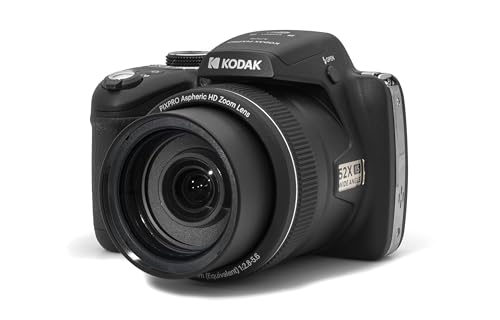
ONVIF (Open Network Video Interface Forum) is a standard protocol that allows different security cameras and video management systems to communicate with each other seamlessly. While ONVIF offers interoperability and ease of use, some security experts argue that turning off ONVIF on your security camera may enhance security.
By disabling ONVIF, you may reduce the risk of potential vulnerabilities and unauthorized access to your camera. However, turning off ONVIF may also limit the compatibility of your camera with other devices and software that rely on this protocol.
Ultimately, the decision to turn off ONVIF on your security camera depends on your security needs and preferences. It’s important to weigh the benefits of enhanced security against the convenience of interoperability when making this choice.
Should I Disable ONVIF?
ONVIF (Open Network Video Interface Forum) is a global standard for the interface of network video products, including security cameras. While ONVIF offers interoperability between different devices, there are some considerations to keep in mind when deciding whether to disable it:
- Security: Disabling ONVIF can enhance the security of your security camera by preventing potential vulnerabilities associated with the protocol.
- Compatibility: If you have a specific need for ONVIF compatibility with other devices or software, disabling it may limit your options for integration.
- Ease of use: Some users find that disabling ONVIF simplifies the setup and configuration of their security camera system.
- Privacy: Disabling ONVIF may help protect your privacy by reducing the risk of unauthorized access to your camera feed.
Ultimately, the decision to disable ONVIF should be based on your specific security and compatibility requirements. It’s important to weigh the benefits and drawbacks before making a decision.
Benefits of ONVIF
Interoperability: ONVIF allows different brands of security cameras and video management systems to work together seamlessly, ensuring compatibility and ease of integration.
Flexibility: ONVIF provides a standardized interface for security devices, enabling users to mix and match cameras, recorders, and other components from various manufacturers.
Future-proofing: By using ONVIF-compliant devices, you can ensure that your security system is ready to adapt to new technologies and updates in the future.
Enhanced functionality: ONVIF offers advanced features such as PTZ control, motion detection, and video analytics, enhancing the capabilities of your security system.
Security: ONVIF compliance ensures that your security devices meet industry standards for data protection and encryption, helping to keep your surveillance footage secure.
Security Risks
Turning off ONVIF on your security camera can pose certain security risks. ONVIF (Open Network Video Interface Forum) is a standard protocol that allows different security devices to communicate with each other. By disabling ONVIF, you may limit the interoperability and connectivity of your camera with other devices, such as NVRs (Network Video Recorders) or VMS (Video Management Systems).
Unauthorized Access: Disabling ONVIF may prevent your camera from receiving important security updates and patches, leaving it vulnerable to security breaches and unauthorized access. Hackers could exploit these vulnerabilities to gain access to your camera and potentially your network.
Compatibility Issues: Without ONVIF, your camera may not be compatible with other security devices or software that rely on this protocol for integration. This could limit the functionality and effectiveness of your overall security system.
It is important to weigh the security risks of turning off ONVIF against the potential benefits. If you choose to disable ONVIF, make sure to implement other security measures to protect your camera and network from potential threats.
Compatibility Issues
When deciding whether to turn off ONVIF on your security camera, it is important to consider compatibility issues. Some devices may not support ONVIF protocol or may have limited compatibility with ONVIF-enabled cameras. Turning off ONVIF may prevent your camera from being accessed or controlled by certain software or devices that rely on this protocol for communication.
Before making a decision, it is recommended to check the compatibility of your camera with other devices and software to ensure that turning off ONVIF will not impact the functionality or usability of your security system. Additionally, consider consulting the manufacturer’s guidelines or technical support to determine the best course of action based on your specific setup and requirements.
Privacy Concerns
When it comes to your security camera, privacy should be a top priority. Turning off ONVIF on your camera can help protect your privacy by preventing unauthorized access to your camera feed. By disabling ONVIF, you can ensure that your camera is not easily accessible to hackers or other malicious actors who may try to exploit vulnerabilities in the ONVIF protocol.
While ONVIF can be convenient for integrating your camera with other devices and software, it also poses a potential security risk. If you are concerned about your privacy and the security of your camera feed, it may be a good idea to turn off ONVIF and take additional measures to secure your camera and network.
Alternative Security Measures
While turning off ONVIF on your security camera may provide some security benefits, there are other measures you can take to enhance the security of your surveillance system:
- Use strong passwords: Ensure that your camera is protected with a strong, unique password to prevent unauthorized access.
- Enable encryption: Utilize encryption protocols such as WPA2 to secure the communication between your camera and the network.
- Regularly update firmware: Keep your camera’s firmware up to date to patch any known security vulnerabilities.
- Limit access: Restrict access to your camera’s footage by configuring user permissions and setting up access controls.
- Monitor network traffic: Use network monitoring tools to detect any suspicious activity or unauthorized access attempts.
By implementing these alternative security measures, you can enhance the overall security of your surveillance system and protect your privacy and data from potential threats.







